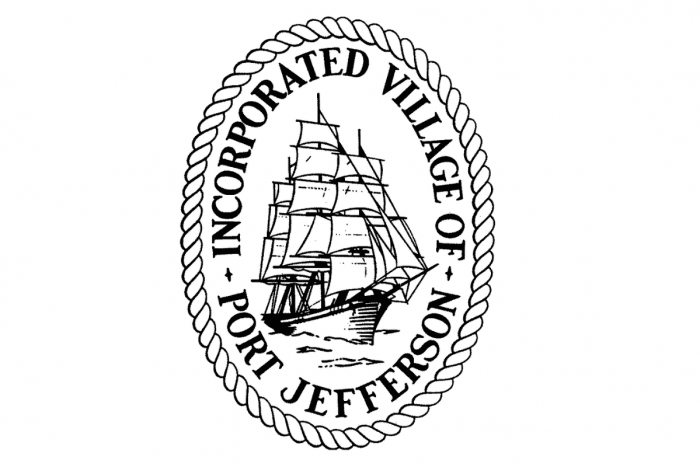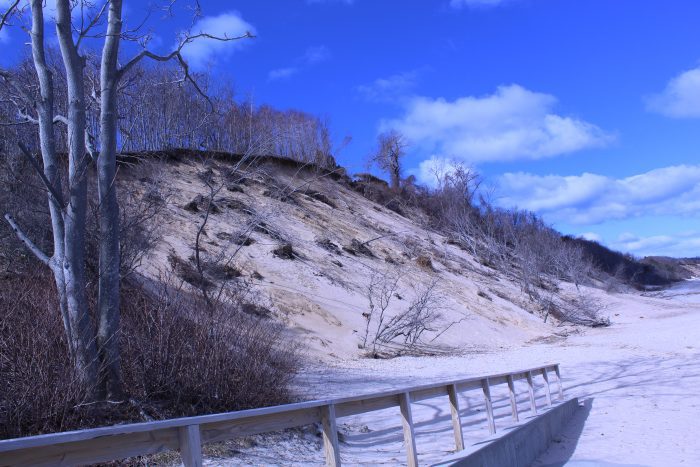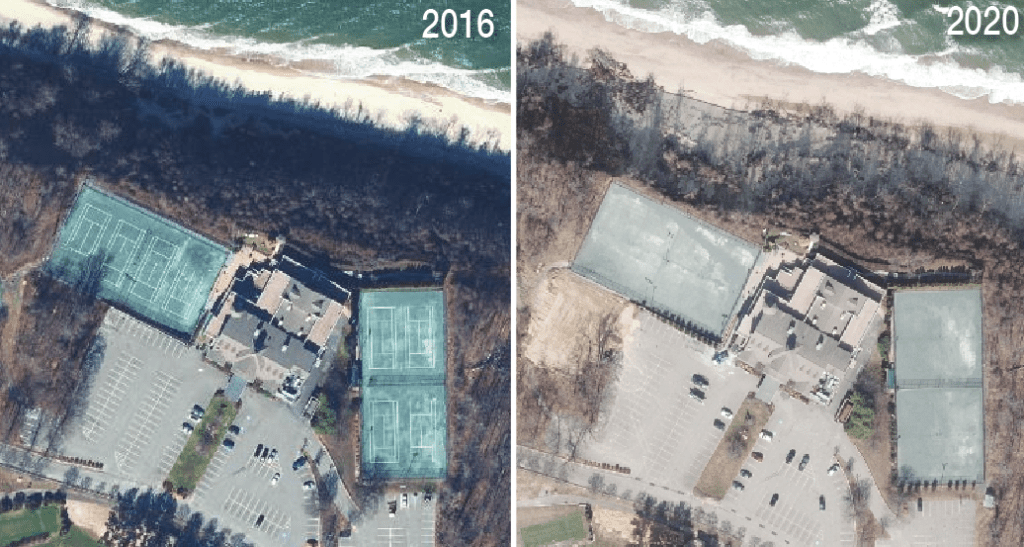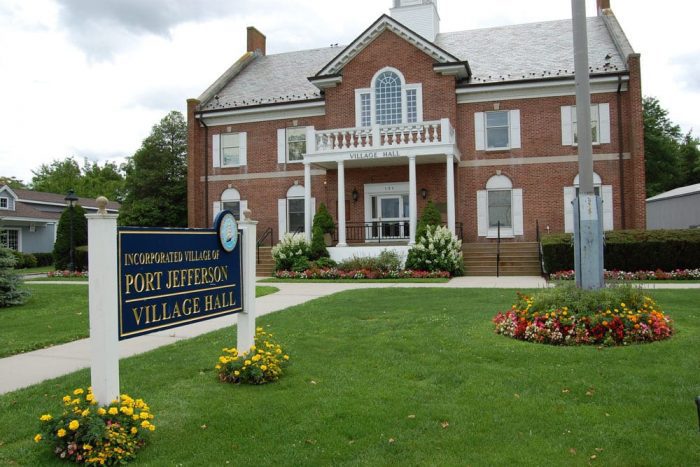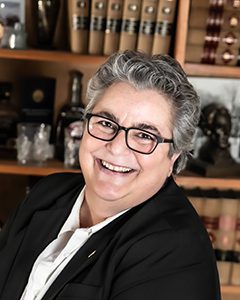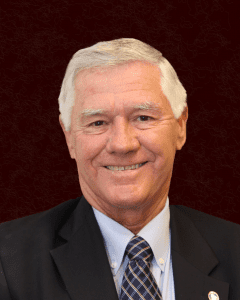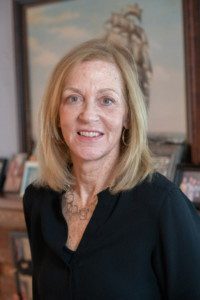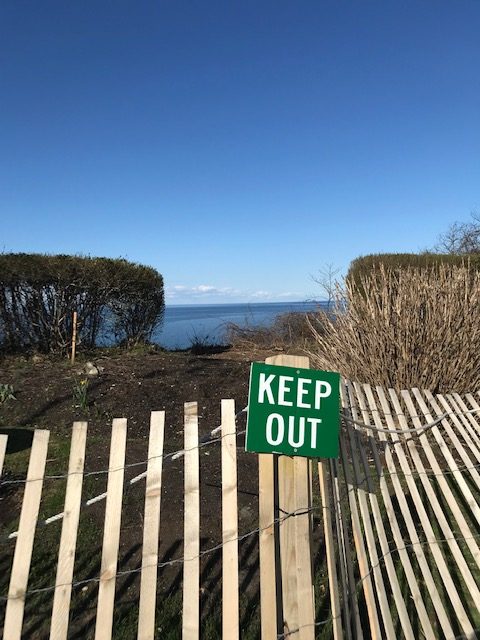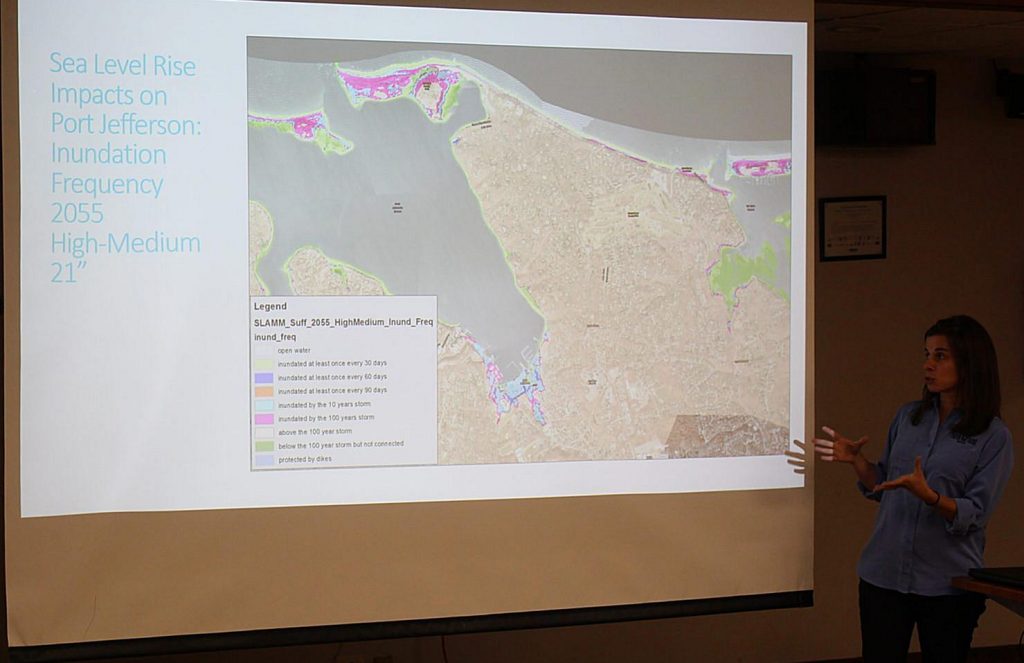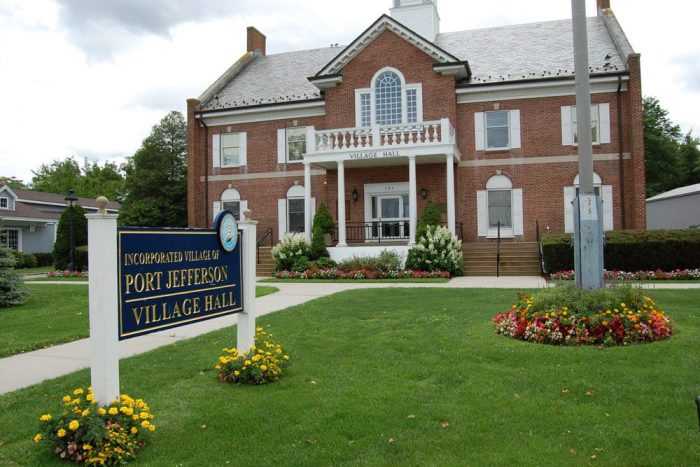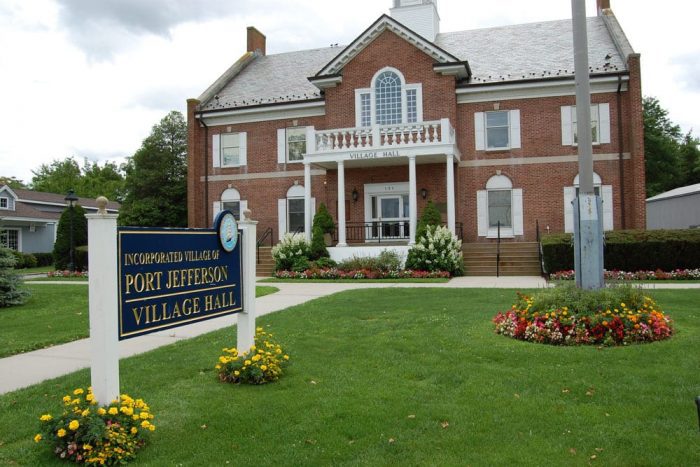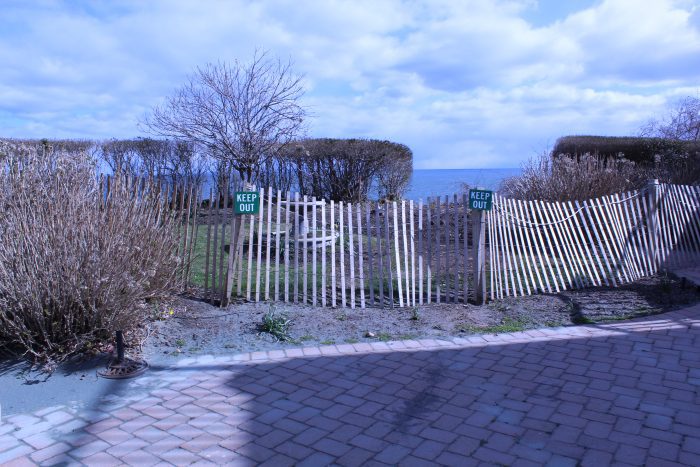The Port Jefferson Village Board of Trustees convened at Village Hall Monday, Nov. 7, for an evening packed with pressing public business.
East Beach bluff
Mayor Margot Garant reported developments from the East Beach bluff construction site, stating buildout of the lower toe wall “has been moving along very nicely.”
“The steel wall is in, the concrete cap is about 100% in, there’s a lot of concrete rebar in there, and now they’re putting in the anchors through the wall and pinning the wall into the cliffside,” she said.
At the upland, the village must soon decide the fate of the clubhouse at Port Jefferson Country Club. The mayor said she has been gathering information from the village’s hired engineers and will provide the board with their findings later this month.
During the public comments, village resident Myrna Gordon inquired about Garant’s recent announcement regarding forthcoming informational meetings on the upland proposals. [See “A message from Mayor Margot Garant: A candid discussion about East Beach bluff,” The Port Times Record, Nov. 3.]
Responding to Gordon, the mayor said more information would be made available following the meeting later this month.
“I’m still getting information from the engineers, looking at some of the drainage plans and alternative solutions for the upland project,” she said. “We put the [upper] wall out to bid. The engineer just got back to us with an analysis of the bid, so it’s coming together for the board to review with me.”
She added, “Then, we’ll be setting a date and either making a presentation at the next board meeting or a special town hall, depending on which way the board thinks we need to go.”
Public safety
Representing the Suffolk County Police Department was police officer Sergio Möller. He stressed the need for drivers to lock their cars and take their keys with them when exiting their vehicles.
“Fifty percent of the cars that get stolen within the 6th Precinct are vehicles that were already running with their keys in it, and that’s a problem,” he said. “Please take your keys with you. Shut the vehicle off. It [takes] only two seconds.”
Code enforcement chief Fred Leute underscored reasons for driving slowly on village roads. “It’s getting dark earlier now,” he said. “We have club and student athletes leaving the school late. It’s already dark, so just drive slow.”
Multiple residents pressed the board on pedestrian safety and walkability. Ana Hozyainova, who ran for trustee earlier this year, asked whether the board is considering a villagewide assessment to promote walkability, bikeability and pedestrian safety.
Responding on behalf of the board, trustee Rebecca Kassay reported she, Deputy Mayor Kathianne Snaden and village staff are exploring the possibility of conducting a study.
“We were pointed toward firms who would do a study, a villagewide study to look at what are the big issues in the village, and how in our particular village can we achieve the goals we want to, both with speed reduction and pedestrian safety,” Kassay said.
Snaden added there might be grant opportunities to subsidize the cost of the study. “It’s expensive, so we have to figure out a way to pay for it,” she said.
Information technology
Kevin Wood, the village’s parking administrator, director of economic development and communications committee head, delivered a presentation on the importance of securing the village’s information technology systems.
Wood’s report comes in the wake of a recent cyberattack against the Suffolk County government. He said municipalities are susceptible to ransomware and other hostile online events due to underfunding, understaffing and outdated systems.
Based on meetings with Island Tech Services, the village’s network partner based out of Ronkonkoma, Wood said he is working to curtail these concerns.
“I live this every day,” Wood said. “I try to be ahead of the curve on this, of what our vulnerabilities are. I have met with ITS in person, and we think we’re on top of it in a lot of different ways.”
He added, “If you look at my past reports, you’ll see why we’re ahead of the curve, but we still have to go forward and think about all of the ways we may be vulnerable.”
The village began enforcing two-factor authentication earlier this month, requiring village employees to pass through a second layer of verification to log into government accounts.
“You cannot sign onto your email with Google without having a way of authenticating [your identity], either through an authenticating app or through your cellphone,” Wood said. “It’s a little bit of a [pain], but we have to get through this because there’s been an indication that that’s how [hackers] are getting in.”
Wood also advocated the village upgrade to Municity 5, a multiplatform, cloud-computing municipal software program. He said this upgrade could make the Building Department “much more efficient and amazing.”
“Because of understaffing and other items, we have not gotten this done,” he said. “I just wanted to report that we have got to get this done.”
Wood further addressed how new technologies will affect parking. Namely, an automated license plate recognition system is already used to enforce parking limits on Main and East Main. This system, Wood said, is gradually supplanting the previous parking enforcement method.
Wood concluded his presentation by noting a villagewide software audit is ongoing to assess other vulnerabilities in the village’s various tech spheres.
Tax code
The night also included a public hearing to amend a section of the tax code. Explaining the measure, village attorney Brian Egan said the New York State Legislature sporadically changes its property tax exemptions for senior citizens.
These changes, according to Egan, often do not correspond to the village’s tax schedule, creating an inconsistency between the state and the village’s tax laws. The motivation for the amendment was to automatically update the village tax code according to changes in state law.
“Instead of us missing that updated income, so a senior citizen can still qualify if that income level went up … we’re going to now set it automatically to whatever the state has,” he said.
Following the public hearing, the board approved the amendment unanimously.
Rental property code
Also on the agenda were two items to put out for public hearing amendments to the village’s rental property code. Kassay, who operates an inn, has helped inform the board of potential code changes, notably affecting Airbnb rentals.
Trustee Lauren Sheprow questioned this process. “I’m still unclear as to how — and I’m going to put out this disclaimer without malice — how a trustee can participate in creating a code and informing the board about a code that has direct impact on a business that she is vested in,” she said.
Sheprow added, “I think there are guidelines and regs in [the New York Conference of Mayors] that say this has a perception or could be perceived as a conflict of interest.”
Responding to Sheprow’s concern, Garant suggested delineating a potential conflict of interest is complicated given how the code affects all board members in their capacity as residents.
“How I feel about this is everything we vote on impacts us because we’re all residents,” the mayor said.
However, she expressed uncertainty regarding enforcing the code change, saying, “I think we need to figure out how we want to, as a board, grasp these issues from an enforcement perspective.”
On the ethics question, Kassay offered that she would recuse herself from any future vote related to this matter. Her intended role was to inform the board, given her professional expertise.
“We all have expertise,” she said. “I gave my expertise and perspective because there’s a lot that seems strange and weird, and it’s an odd industry. For me, whatever comes of it comes of it.” The trustee added, “If you’re looking at it, it’s creating more competition. The way it’s written, for my personal business, there’s no benefit.”
Responding, Sheprow said: “Regardless of what you are telling us right now, your involvement in this process is a conflict.”
The board agreed to table the two items pending an ethics review from the New York Conference of Mayors.
To watch the full general meeting, including trustee reports and public comments, click here.

